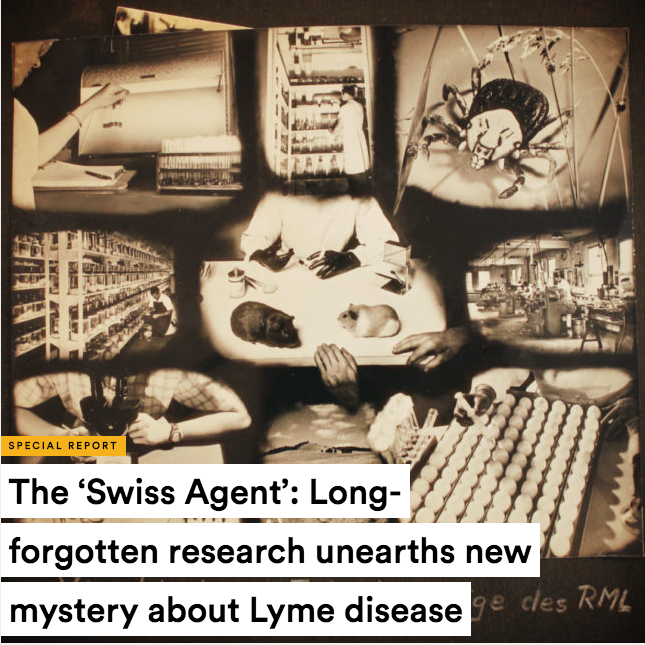
The tick hunter was hopeful he had found the cause of the disabling illness, recently named Lyme disease, that was spreading anxiety through leafy communities east of New York City. At a government lab in Montana, Willy Burgdorfer typed a letter to a colleague, reporting that blood from Lyme patients showed “very strong reactions” on a test for an obscure, tick-borne bacterium. He called it the “Swiss Agent.”
But further studies raised doubts about whether he had the right culprit, and 18 months later, in 1981, Burgdorfer instead pinned Lyme on another microbe. The Swiss Agent test results were forgotten. Now STAT has obtained those documents, including some discovered in boxes of Burgdorfer’s personal papers found in his garage after his death in 2014. The papers — including letters to collaborators, lab records, and blood test results — indicate that the Swiss Agent was infecting people in Connecticut and Long Island in the late 1970s. And scientists who worked with Burgdorfer, and reviewed key portions of the documents at STAT’s request, said the bacteria might still be sickening an unknown number of Americans today. While the evidence is hardly conclusive, patients and doctors might be mistaking under-the-radar Swiss Agent infections for Lyme, the infectious disease specialists said. Or the bacteria could be co-infecting some Lyme patients, exacerbating symptoms and complicating their treatment — and even stoking a bitter debate about whether Lyme often becomes a persistent and serious illness. Swiss Agent, now called Rickettsia helvetica, is likely not a major health risk in the United States, in part because such bacteria typically respond to antibiotics. Still, several of Burgdorfer’s former colleagues called for infectious disease researchers to mount a search for the bacterium. “It should be done,” said Jorge Benach, a professor emeritus at Stony Brook University and a coauthor of Burgdorfer’s seminal 1982 paper describing the detection of the Lyme microbe. Public health concerns warrant a new study, Benach said, and with today’s more advanced “weaponry for pathogen discovery, it would make perfect sense.” Dr. Paul Mead, chief of epidemiology and surveillance for the Centers for Disease Control and Prevention’s Lyme disease program, said that he wasn’t familiar with Rickettsia helvetica, but that “new tick-borne pathogens could certainly be out there.” He cited several found in the years since Lyme’s cause was discovered. Any serious, common co-infection would usually, but not always, be noticed by physicians as a distinct problem in Lyme endemic areas, he said. In Europe and Asia, Rickettsia helvetica has been recognized as a relatively rare but sometimes serious health threat if untreated. It’s been linked to a handful of sudden deaths from heart disease, as well as facial palsy, deafness, meningitis, chronic muscle weakness, and temporary paralysis. But US laboratories don’t test for the Swiss Agent. STAT was approached with Burgdorfer’s archives by Kris Newby, who is writing a biography of Burgdorfer and produced an award-winning documentary that sympathetically depicts Lyme patients and doctors who challenged the medical establishment over its approach to Lyme diagnosis and treatment. The documents offer a tantalizing glimpse into how disease detectives tracked down Lyme’s cause — and how potentially significant loose ends can sometimes be dropped by researchers pressed for time and funding or diverted by more promising leads. Read the entire article on STAT.






-2.jpg)